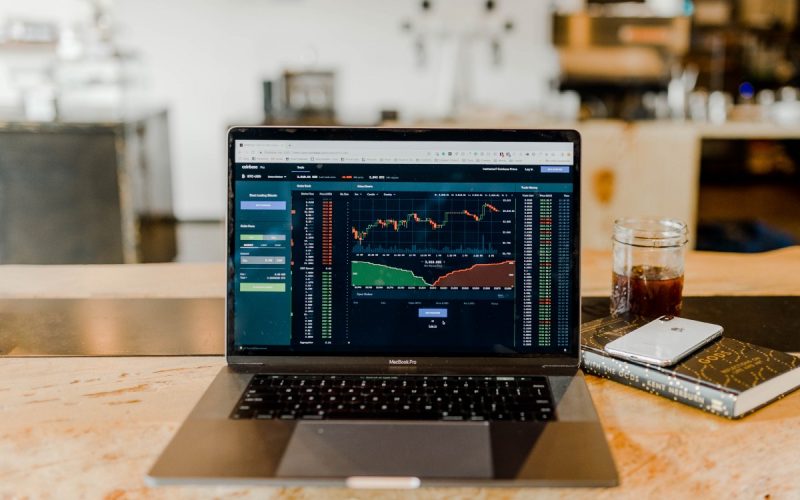Both VOO and SPY are S&P 500 index trackers with similar performance and dividend yields. VOO, however, is less expensive, with an expenditure ratio of 0.03 percent vs 0.0945 percent for SPY. As a result, on the basis of cost, VOO is the better S&P 500 index fund. Regardless, both ETFs are quite competitively priced. It won’t make a difference whether you invest in one ETF or the other. Either way, this post will outline the distinction between VOO and SPY (VOO vs SPY). It will also go over your investment options in detail so you can make the best decision.
VOO vs SPY: What Are They?
VOO and SPY are S&P 500 index funds that seek to replicate the performance of the S&P 500 index fund. Both VOO and SPY are around a tenth of the entire value of the S&P 500. As a result, retail investors can invest in the top 500 US corporations at a reasonable cost.
The S&P 500 is an index fund that monitors the performance of the United States’ top 500 corporations. Since its inception, the S&P 500 has averaged a 10% annualized return on investment. The S&P 500 is regarded as an investment benchmark, and most funds are unable to outperform the S&P 500.
So why wouldn’t you just put your money in the S&P 500? Why do you need a VOO or SPY fund?
For most individual investors, the S&P 500 is a costly investment. A single share of the S&P 500 costs $3,800 now, yet VOO is only $350 and SPY is $380. VOO and SPY are inexpensive ways to invest in the S&P 500.
VOO vs SPY: Similarities
To further open you to the pieces of information you’d need to make a decision between VOO vs SPY, below are the similarities between the two.
#1. Strategy and Holdings
Like we mentioned earlier, both SPY and VOO are index funds that track the S&P 500. The 500 largest public U.S. shares are included in the index, which is subject to a basic set of liquidity, size, and other qualifying criteria. It’s a weighted index based on market capitalization.
Both SPY and VOO offer well-diversified holdings as a result of their respective indexes. The total number of holdings, at 500, is rather substantial, and they are well-diversified across all major industrial categories. Furthermore, due to the substantial market capitalizations of the largest tech companies, such as Apple (AAPL), Microsoft (MSFT), and Google (GOOG), both funds are overweight tech (GOOG). The funds’ industry weights are virtually identical.
Read Also: Value Investing: Detailed Guide To Value Investing Strategy
Neither fund is overly concentrated, with the top ten holdings accounting for around 28% of each fund’s entire value. The holding weights of the funds are likewise nearly equal.
The tiny changes in weights are nearly entirely due to the fact that Vanguard publishes its holdings on a monthly basis, therefore the fund’s weights are often out of date.
But then, the diverse holdings of SPY and VOO decrease portfolio risk and volatility, which is a big win for the funds and their investors. Both funds have the potential to be the core, if not the sole, holding in a portfolio. More diversification into small-cap and international stocks would be ideal, but sticking to the S&P 500 index is also a viable option.
Read Also: Robinhood vs Stash: Comprehensive 2023 Review & All You Need
Both are large-cap funds, with a weighted average market cap of $534 billion, because the S&P 500 only contains the 500 largest U.S. corporations. A broader U.S. stock index fund, the Vanguard Total Stock Market ETF (VTI), has a weighted average market cap of $440 billion. Large-cap equities are the emphasis of SPY and VOO, but this is partially, if not entirely, due to the nature of US equity markets. Plus because the United States is home to some of the world’s top corporations, investing in the country entails investing in these large corporations. Focusing on large-cap shares decreases risk by focusing on companies with more diverse revenue streams, stronger business strategies, and stronger balance sheets.
Both funds lack exposure to thousands of mid-cap and small-cap shares because the S&P 500 only covers 500 U.S. companies. VTI, for example, holds 3935 equities, which is more than 3400 more than either of these funds. Although both SPY and VOO are well-diversified, broader equity market indexes are more so and give investors with exposure to a far larger and more diverse selection of stocks.
Read Also: ETF Portfolio: 7+ Best Dividend Portfolios in 2023
For increased diversification, I believe that combining SPY and VOO with some smaller investments in small-cap shares or equity funds would be perfect. Some investors, on the other hand, may opt to concentrate on comparatively safer large-cap equity/equity funds, which is quite rational.
The approach and holdings of SPY and VOO are largely sound, but there is one major flaw. Both funds invest in firms after they have grown to be huge and successful, and hence miss out on the benefits of their success.
It’s easier to demonstrate this using an example.
Tesla (TSLA) has been one of the most profitable businesses and investments in recent history. Tesla changed the automotive business by creating, manufacturing, and marketing the first mass-market electric vehicles, albeit aimed at more affluent customers. Since its IPO in 2010, Tesla’s revenues and earnings have skyrocketed. Investor gains have been even better, with the stock up over 14,800% since its IPO. These are exceptional returns, much above those of the S&P 500 index and quite rare for public equities markets
Read Also: Where To Invest Money: Best Places To Invest and Get Good Returns
Although SPY and VOO both hold Tesla stock, they have not reaped the benefits of the company’s rising stock price. Tesla was finally included in the S&P 500 on December 21, 2020, after the company’s stock price had already increased. It has been up 9.6% since it was introduced to the index, and it now joins SPY and VOO, which have quite great absolute returns but relatively mediocre relative returns. Tesla has been one of the most successful firms and investments in recent memory, yet SPY and VOO both waited far too long to invest.
The S&P 500 index, as previously stated, is generally rational, but the above is a huge drawback. I prefer broader equity market indexes such as VTI, but then the S&P 500 index is large and diversified enough that these flaws aren’t a deal-breaker.
#2. Shareholder Returns
Both SPY and VOO provide investors with good total shareholder returns on a regular basis. Basically, annual returns in the double digits are the norm. This has been the case for the last ten years or so, as well as for the majority of other relevant time periods. Due to the fund’s lower expense ratio, VOO’s returns are somewhat greater than SPY’s, but the difference is little and not particularly significant.
Returns on the S&P 500 index have been good in the past, but not as high as some other regular indexes. According to NYU’s Damodaran, the S&P 500 has averaged yearly returns of 11.6 percent since its inception. These are great profits that will benefit investors considerably.
Furthermore, because of the strength, dynamism, and quick growth of the US economy, corporate sector, and public equities markets, S&P 500 returns have been consistently strong. Few countries or marketplaces are as safe as the United States, and even fewer are as dynamic and fast-growing.
Read Also: INVESTING IN EQUITIES: Benefits and Simple Guide to Investing
Meanwhile, total returns for SPY and VOO are likely to remain robust as long as underlying economic and industry circumstances remain stable. The economy is still growing strongly, unemployment is decreasing, and inflation is returning to normal levels. Corporate earnings are also increasing at a rapid pace:
There may be a few snags here and there, and the coronavirus is still a concern, but the economy appears to be in good health, and a ton of investors and analysts seem optimistic. Never bet against America, as Warren Buffett says.
Both SPY and VOO provide investors with excellent prospective shareholder returns, which is a significant benefit.
#3. Valuation Analysis
Right now, equity valuations are a touchy subject.
On a historical basis, the S&P 500 is clearly overpriced. In the late 1990s, valuations were only going up, which led to the dot-com boom and crash, as well as the ensuing equities market losses. This isn’t the best example though.
Furthermore, in the preceding years, current equity market valuations have generally coincided with extremely low future returns. If history is anything to go by, SPY and VOO returns will be quite low in the coming years.
Equities, on the other hand, appear to be considerably undervalued in terms of relative yield/interest rate. To put it another way, equities are fairly priced, whereas bonds are excessively costly. Equity valuations appear more rational in these circumstances.
To sum it up;
- In comparison to its historical average, the S&P 500 is overvalued.
- In comparison to current interest rates, the S&P 500 is undervalued.
- Overall, tons of analysts believe the S&P 500 is slightly overvalued, but the data is inconclusive, and conditions can always change.
#4. Dividend Analysis
Investors in SPY and VOO can expect outstanding overall gains, but low yields and dividend growth. SPY has a yield of 1.26 percent, whereas VOO has a little higher yield of 1.30 percent. VOO’s slightly higher dividend yield is due, at least in part, to the fund’s lower expense ratio, but ETF payouts are particularly volatile, so I wouldn’t put too much weight on VOO’s slightly higher dividend yield.
Both funds have decent dividend growth, but nothing to brag about. Annual growth is in the mid-single digits, and it appears to be slowing down. Slower growth is most likely the result of firms turning away from dividends and toward share buybacks, which have a more advantageous tax treatment.
However, while VOO’s dividend growth metrics are better than SPY’s, the differences are virtually definitely due to noise because both funds track the same index. The vast majority of ETFs, including VOO and SPY, pay out all of the income generated by their underlying holdings as dividends to owners. The timing of these payments could differ, affecting dividend yield and dividend growth metrics, which almost probably explains VOO’s (ostensibly) greater dividend growth numbers.
Read Also: INVESTING IN EQUITIES: Benefits and Simple Guide to Investing
In Q4 0f 2020, for example, SPY received a relatively high dividend payment. VOO did not, however it did pay a very little dividend in the first quarter of 2020:
But despite these metrics, both funds offer comparable long-term dividend yields and payments with the actual percentages varying from quarter to quarter. These changes are primarily sporadic; the result of minor differences in how funds handle dividend reimbursements, and they aren’t particularly significant. These discrepancies, on the other hand, can occasionally result in (short-term) differences in the yield and dividend growth measures of these two funds.
In any event, SPY and VOO both offer similar dividend yields and dividend growth to investors. Both of these funds are not especially robust, thus they are not suitable for dividend or income investors: they are capital gains and total return vehicles.
VOO vs SPY: Differences
Although SPY and VOO are quite comparable funds, there are a few minor distinctions that investors should be aware of.
#1. Expenses
VOO has a 0.03 percent expenditure ratio, but SPY has a 0.09 percent expense ratio. The fund and its shareholders gain from VOO’s lower expense ratio since it immediately increases, or reduces, shareholder returns. It’s a minor benefit, as a rise of 0.06 percent in yearly returns isn’t particularly significant, but it’s still a benefit. I don’t understand why index funds should be overpriced, so VOO is the obvious pick.
#2. Investment Manager
State Street is in charge of SPY, while Vanguard is in charge of VOO.
Despite the fact that I have nothing against State Street, I believe Vanguard is the superior investment manager. Vanguard is likewise set up as a mutual corporation, which means that its customers own it rather than outside shareholders. And because there are no shareholders, there are no profits, which equals cheaper costs for investors. It also ensures that Vanguard’s stockholders and fund investors do not have a conflict of interest. The structure creates a low-cost, quiet corporation, ideal for index funds. The structure also assures that any and all changes or enhancements to VOO benefit investors directly, rather than Vanguard as a whole. In the case of SPY and State Street, we can’t say the same.
As a result, VOO appears to be the better option.
#3. Liquidity
With roughly $395 billion in assets and an average daily volume of $36 billion, SPY is the world’s largest and most liquid investment vehicle.
On the other hand, with nearly $212 billion in assets and an average daily volume of $1.4 billion, VOO is the third-largest S&P 500 index fund.
Both funds are large enough to have a 0% chance of going bankrupt and liquid enough to have spreads that are virtually zero.
However, for more aggressive traders, especially options traders, SPY’s liquidity is more significant and beneficial. The spreads on SPY options are typically substantially lower than those on comparable VOO options.
SPY options spreads are substantially lower than VOO spreads. Because of the foregoing, SPY is the better fund for investors looking for S&P 500 options or who want to include these options in their entire investment strategy. Investors wishing to sell covered options, for example, should consider selling SPY calls to take advantage of lower option spreads.
VOO vs SPY: Which Is a Better Buy?
For the vast majority of investors, VOO is the better investment due to its lower expense ratio and stronger organizational structure. VOO and SPY, on the other hand, are extremely similar funds, so expect functionally equal results from both.
VOO vs SPY: What Other S&P 500 ETFs Should You Consider?
The only other ETF worth considering that attempts to replicate the S&P 500 index is Ishares Core S&P 500 ETF (IVV), which is very competitive with a low 0.03 percent expense ratio, similar to VOO, and still has good liquidity and AUM.
There are no other S&P 500 ETFs that are competitive, so I’d stick with those three. If you’re concerned about ETF/institutional risks (bankruptcy), you should probably choose two. If we’re holding for the long term, we’d go with VOO and IVV, or SPY and IVV if we’re also doing some options trading.
What Percentage of Your Portfolio Should Be Made Up of S&P 500 ETFs?
Because the answer to this question is largely dependent on your objectives, level of financial understanding and passion, as well as risk tolerance, Ithere is really no definite response. If you’re not sure, speak with a financial counselor or take some time to figure it out on your own.
Personally, I believe that one can easily allocate half of one’s broad-market ETF portfolio to S&P 500 ETFs; however, I would not want my broad-market ETF portfolio to be more than 30% of my overall portfolio — so no more than 15% of my overall portfolio for me, as I’d prefer to have some non-US broad-market ETFs in the mix.
What Is the Impact of the Additional 0.05 Percentage Fee SPY Charges?
It traditionally reduces your returns by around 0.72 percent every 5 years. It’s not a huge thing, but if you invest $100,000 over the next 20 years, that’s thousands of dollars in fees that will be blown away in the wind.
Normally, we aren’t concerned about fees, but the difference between 0.08 percent and 0.03 percent is significant — we wouldn’t be concerned if the difference was 0.04 percent to 0.03 percent, but 0.05 percent is significant enough for us to be concerned, even if it is relatively insignificant in the grand scheme of things.
Is It Worth Investing in Voo?
The VOO appeals to many investors since it is well-diversified and made up of large-cap stocks (equities of large corporations). The fund’s broad-based, diversified stock portfolio can help mitigate, but not remove, the risk of loss in the event of a market downturn.
Is the S&P500 a Mutual Fund?
Because the S&P 500 index accounts for 80% of the market’s value, it’s now largely regarded as the finest single indicator of the market. They’re a type of mutual fund that isn’t actively managed by someone trying to outperform the market, but rather is designed to track the performance of an index, such as the S&P 500.
How Much Should I Invest in Voo?
There are two main points to take away from this. To begin, if you start saving before your 30th birthday, you’ll only need to invest roughly $400 per month in VOO or a comparable fund to reach your target balance — or even less if your company matches your contributions. But then how much you should invest in VOO is relative. It largely depends on your investment goals and a couple of other factors.
Is Voo Passively Managed?
With $500 billion in assets under management, the Vanguard S&P500 ETF (VOO) is one of the largest index funds that track the S&P500. It also has one of the lowest expense ratios, which makes it a favorite of passive index investors.
Can You Reinvest Dividends in Voo?
With this no-fee, no-commission reinvestment program, you can reinvest dividend and/or capital gains distributions from any or all eligible stocks. It also includes closed-end mutual funds, exchange-traded funds (ETFs), FundAccess® funds, or Vanguard mutual funds in additional shares of the same in your Vanguard Brokerage Account.
DISCLAIMER!
This article should NOT serve as an investment guide, it’s solely for informational purposes. We thereby emphasize that we do NOT endorse any of the investment options. They are subject to your choice of decision and verification. We are not sponsored by any of the investment firms and the information provided here is to the best of our knowledge.
Related Articles
- HOW TO INVEST IN S&P 500: Baby step &The most Popular Options in 2023 (Updated)
- INVESTING IN EQUITIES: Benefits and Simple Guide to Investing
- Best Index Funds: Top 13+ 2023 Picks for Beginners and Pros
- Index Funds: Best 2023 US Practices & All you Need!!!
- The Role Of Precious Metals In An Investment Portfolio
- Reasons Why You Should Invest In Ether Fund






